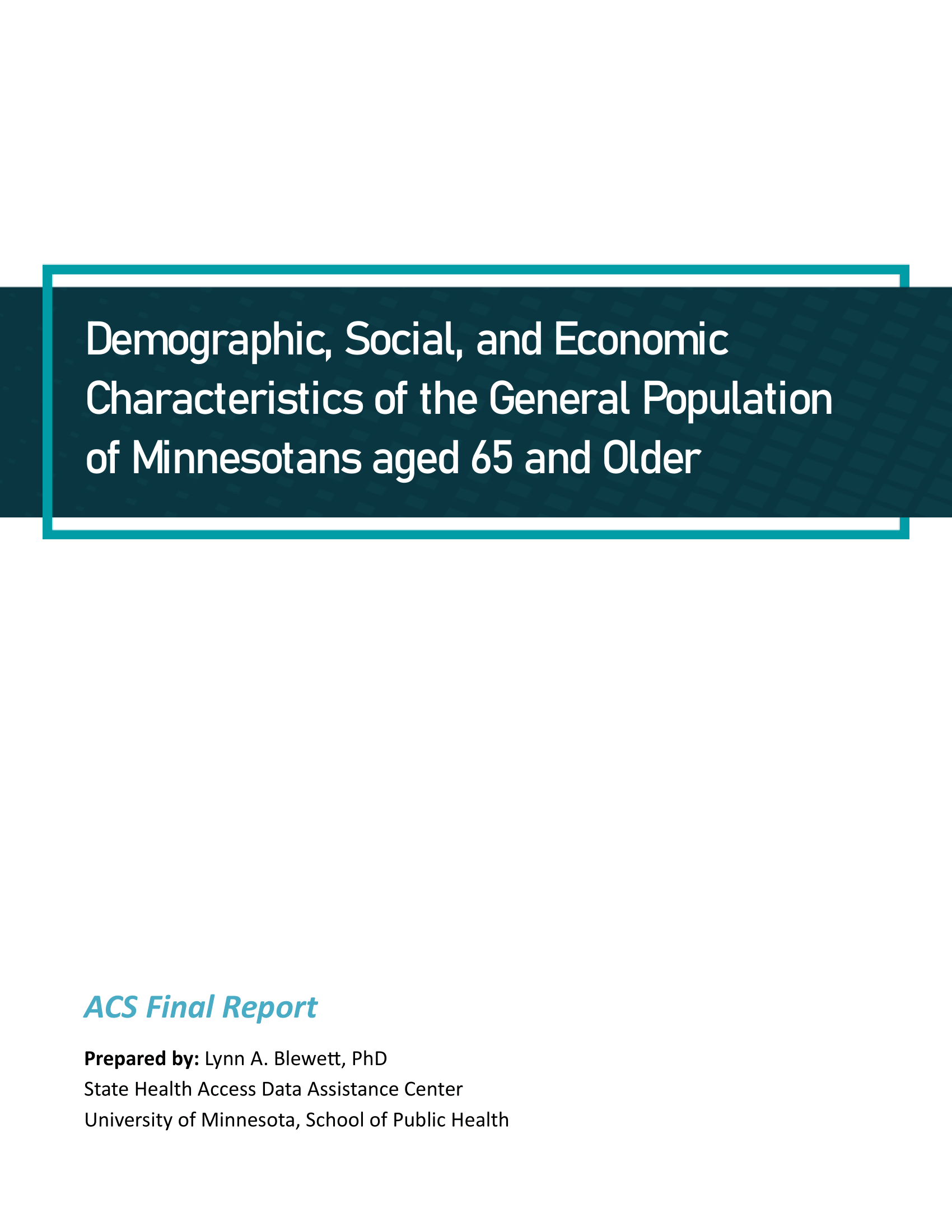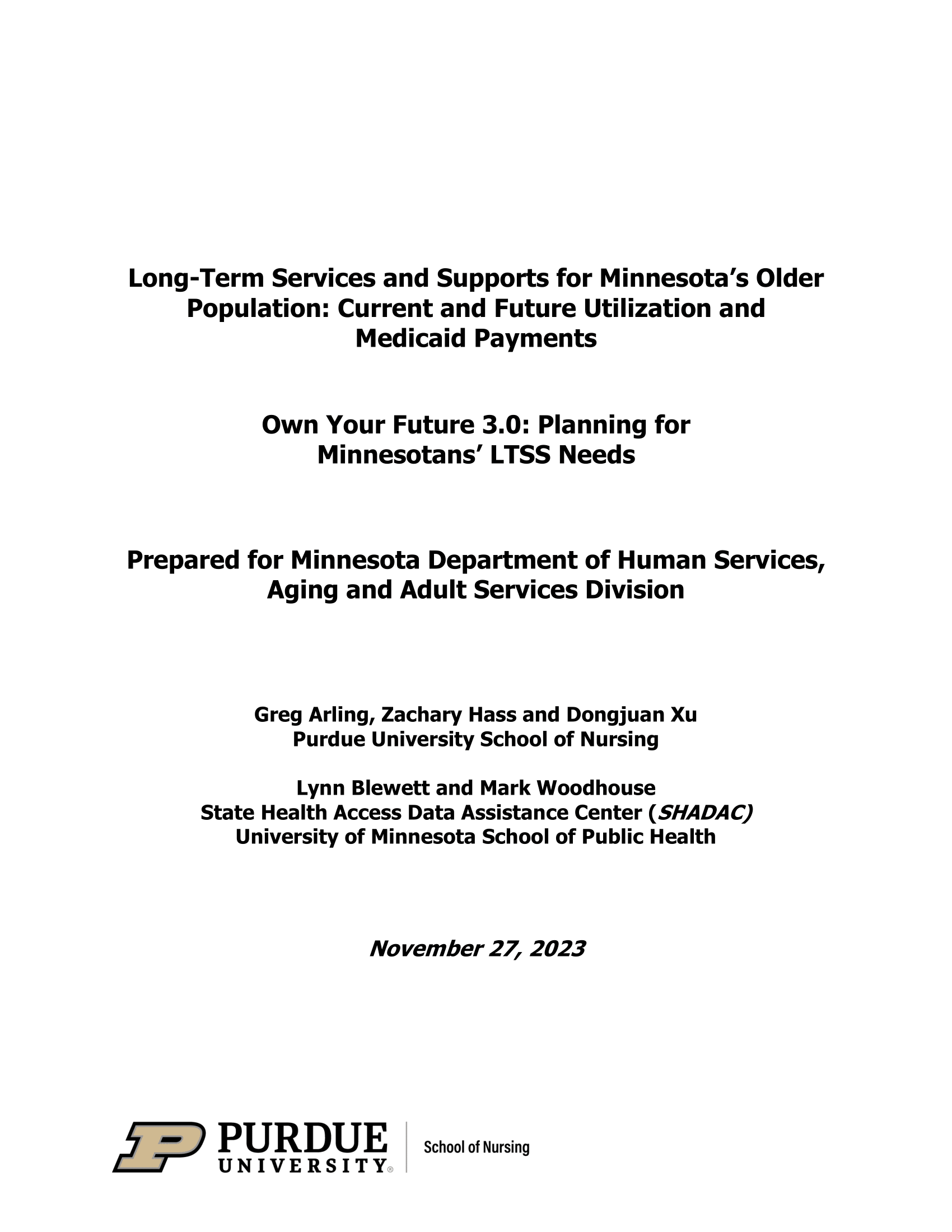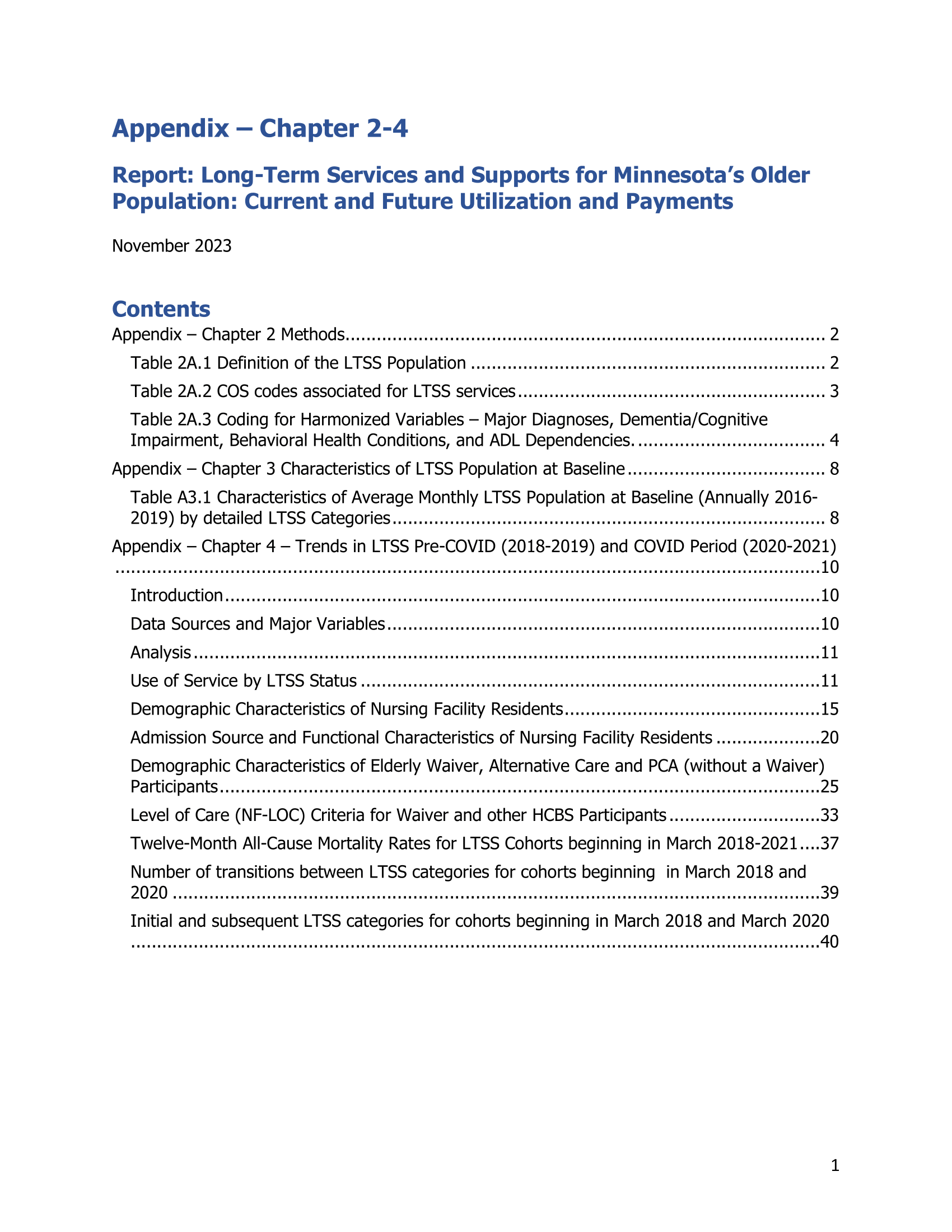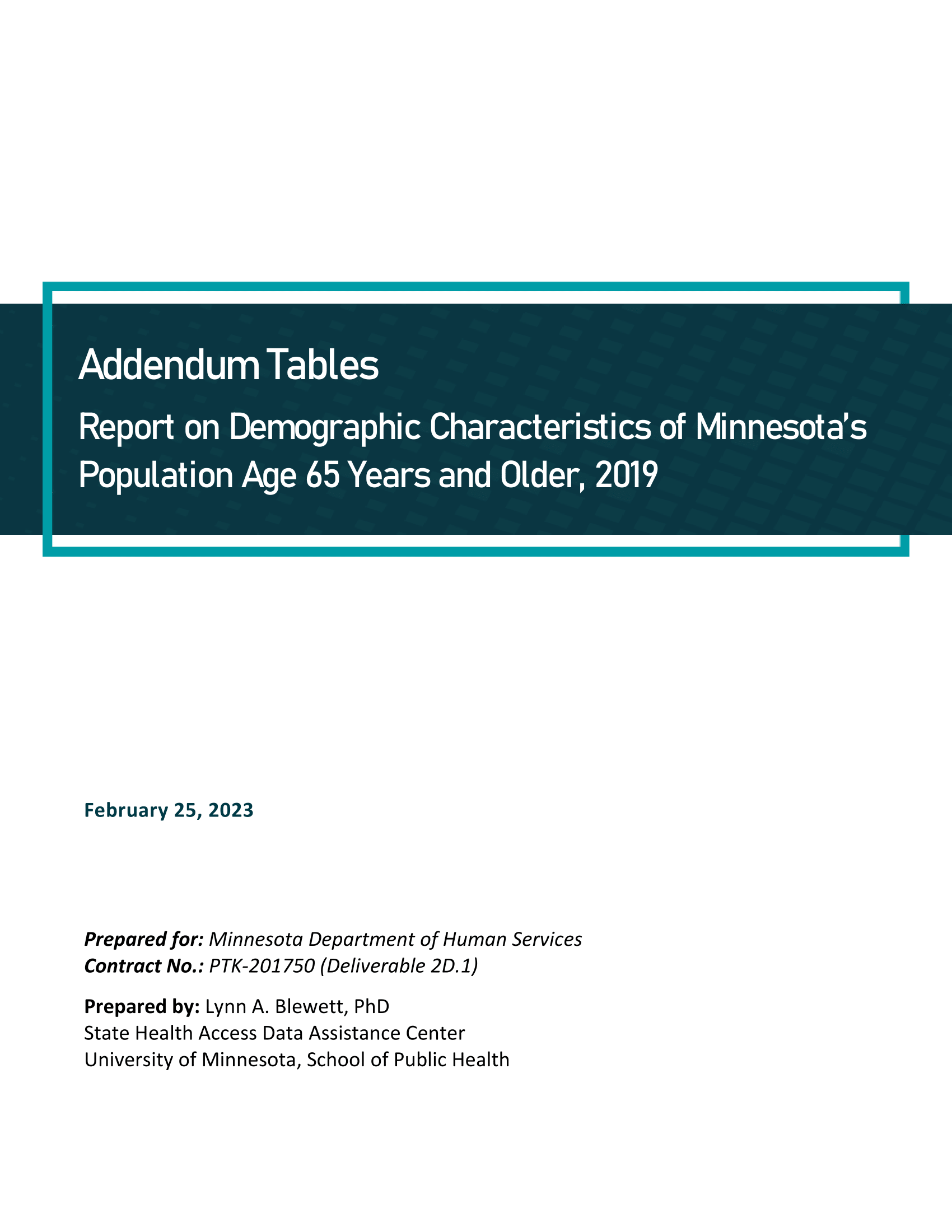Resource: Long-Term Services and Supports (LTSS)
Long-Term Services and Supports (LTSS)
Long-term services and supports (LTSS) encompasses the broad range of paid and unpaid medical and personal care assistance that people may need—for several weeks, months, or years—when they experience difficulty completing self-care tasks.1 The majority of LTSS is paid for by Medicaid, at a tremendous and growing expense to states. It is critical that states strategically plan for the future impact of these demographic trends both for the needs of individuals but also for impact on state programs and services, particularly state Medicaid financing.
In Minnesota, the elderly (age 65 and older) currently make up only 6 percent of the Medicaid population; however, they account for 22 percent of total Medicaid spending with an average annual cost in 2015 of $36,990.2
By 2020 the Minnesota Demographic Center estimates that Minnesotans age 65+ will grow by nearly 20 percent, resulting in an additional 160,000 older adults. By 2030, the total number of older adults in the state will grow to 1.28 million. While older adults account for about 16 percent of the state’s population, by 2030 they will make up 22 percent of the population—that is, one out of every five Minnesotans will be age 65 or older.3
This report, created as a part of SHADAC's project with the State of Minnesota Department of Human Services to document the current utilization of Medicaid Long Term Services and Supports (LTSS), presents an overview of the general population of Minnesota aged 65 and older, including their demographic, social, and economic characteristics; it also includes comparison between those enrolled in Medicaid and those not enrolled. Researchers also examine and compare the characteristics of Minnesota’s elderly population (both Medicaid and non-Medicaid) to the U.S. population. For this analysis, researchers use Minnesota data from the 2019 U.S. American Community Survey. Click here to access the full report.
Long-Term Services and Supports for Minnesota’s Older Population: Current and Future Utilization and Payments, November 2023
This is the final report from the above-named project, which was conducted as part of a larger study, Own Your Future 3.0: Planning for Minnesotans’ LTSS Needs, sponsored by Minnesota’s Department of Human Services, Aging and Adult Services Division. SHADAC researchers and collaborators on this project worked towards the objectives of studying current and future use of Long-Term Services and Supports (LTSS) for older Medicaid enrollees and the general older population in Minnesota, describing LTSS service utilization and expenditures for Minnesota’s older population in 2016-2021, and estimating future Medicaid LTSS utilization and expenditures using demographic data, areas of need, and other information. Learn more about our estimates and conclusions by clicking here to access the full report.
Appendices for Report 'Long-Term Services and Supports for Minnesota’s Older Population: Current and Future Utilization and Payments', November 2023
This document includes Appendices for Chapters 2 - 4 for the report titled Long-Term Services and Supports for Minnesota’s Older Population: Current and Future Utilization and Payments (linked above). Click here to access the appendices in full.
Addendum Tables Report on Demographic Characteristics of Minnesota’s Population Age 65 Years and Older 2019, February 2023
The following tables represents additional work conducted by the State Health Access Data Assistance Center (SHADAC) under the University of Minnesota’s contract with the state of Minnesota Department of Human Services to conduct a study to document the current utilization of Medicaid Long-Term Services and Supports (LTSS). We present demographic characteristics from analysis using data from the 2019 American Community Survey of non-Hispanic Black (Black) population and the white (white) population for Minnesota and the U.S. We also present data representing Minnesota’s elderly population with incomes at or over $75,000. Click here to access the report in full.
Minnesota LTSS Conceptual Model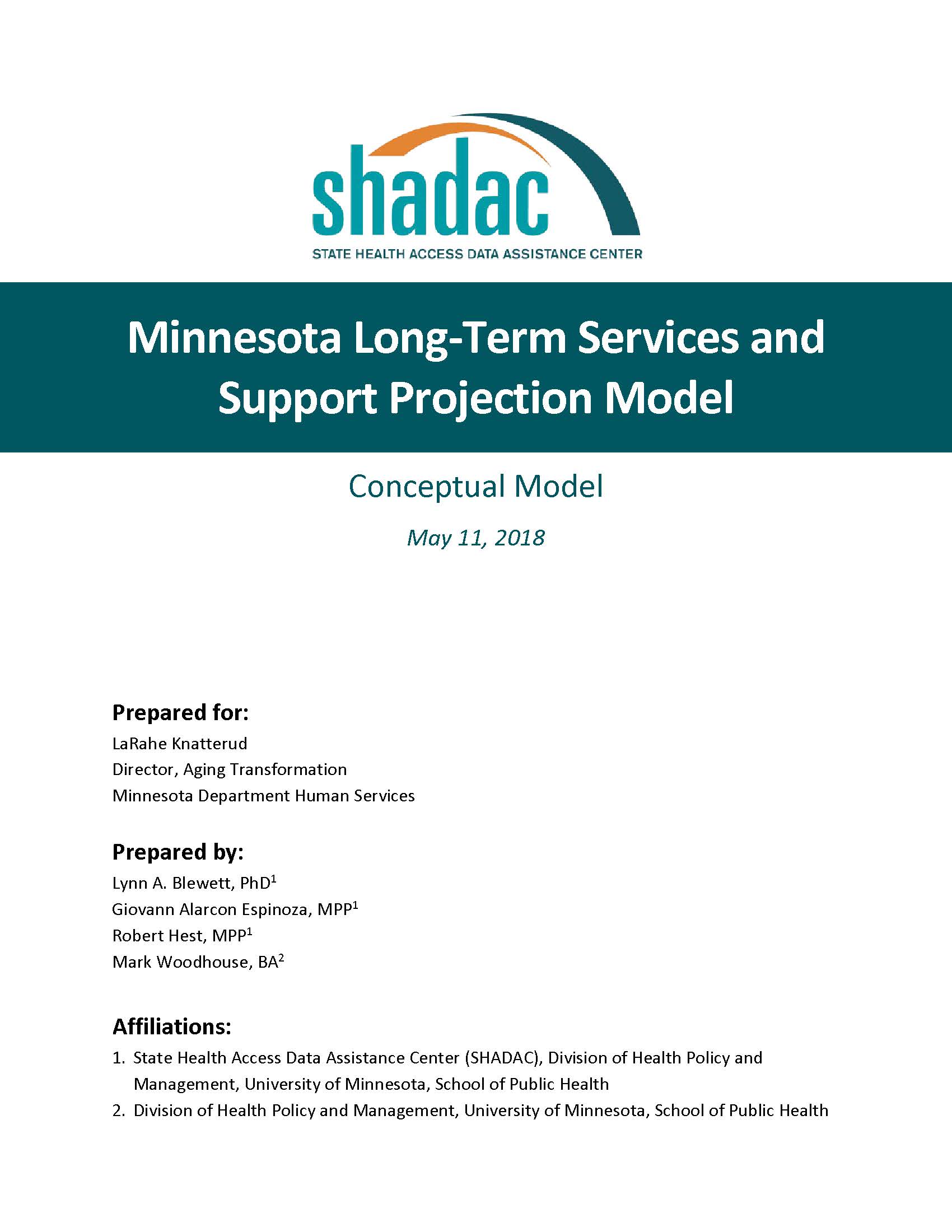 , May 2018
, May 2018
In addition, the Minnesota LTSS Projection Model allows for the estimation of the LTSS and Medicaid costs under different policies scenarios. We estimated the potential cost savings to Medicaid produced by two policies under evaluation by MN DHS: The Enhanced Home Care Benefit in Medicare Supplemental Plans and the LifeStage Policy. The first consists of adding a limited home care package on all Medicare supplemental plans in MN. This package includes non-medical chore services, service coordination, and adult day care. The second policy is a private insurance policy that combines two products; it provides life coverage up to the age of 65 and LTC coverage starting at that age. Click here to access the Minnesota LTSS Conceptual Model.
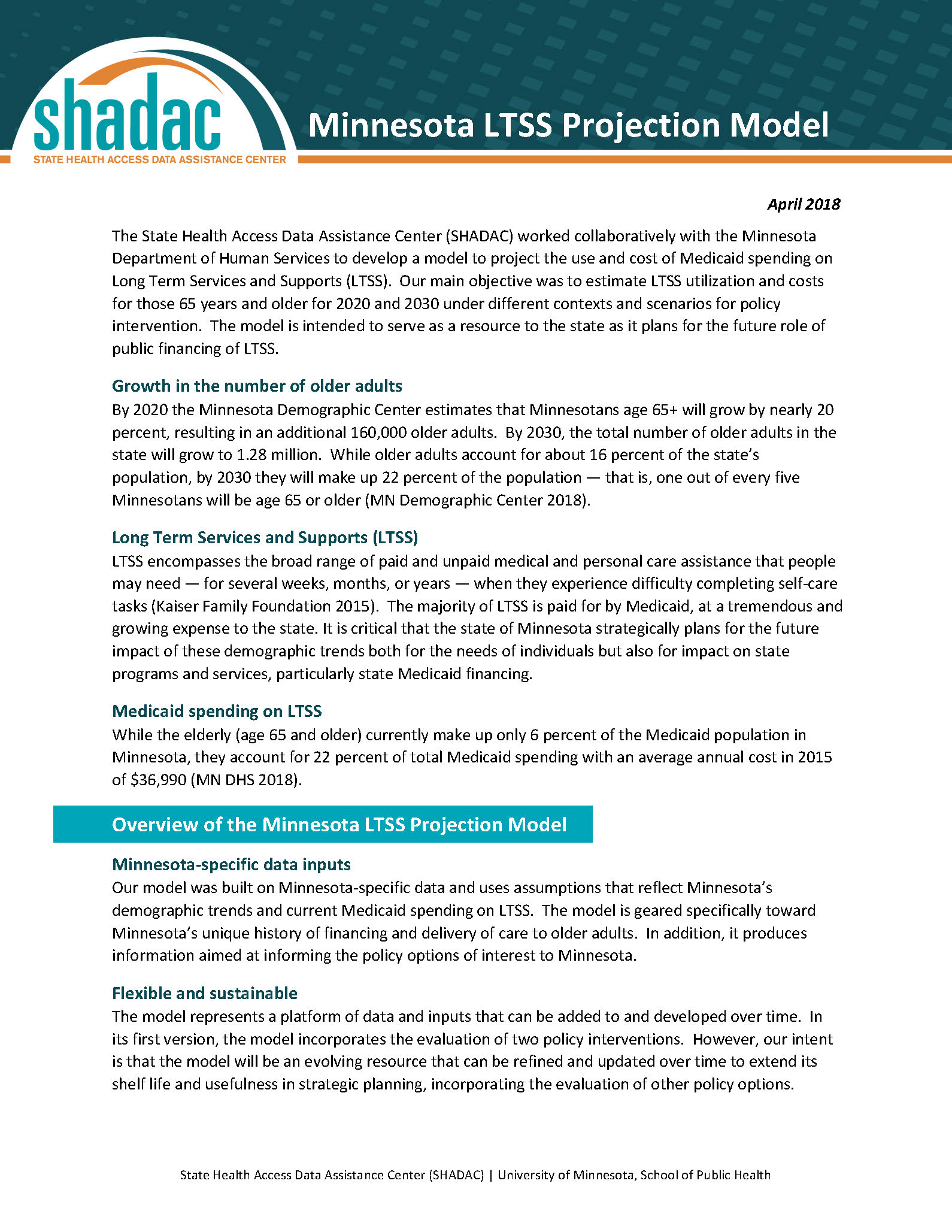
Minnesota LTSS Projection Model, April 2018
SHADAC worked collaboratively with the Minnesota Department of Human Services to develop a model to project the use and cost of Medicaid spending on LTSS for all elderly Minnesotans. Using Minnesota-specific data and based on assumptions that reflect Minnesota’s trends and policy environment, and beginning with 2015 as the base year, this model projects the elderly population in Minnesota, their characteristics, need for LTSS, and state spending on these services into 2020 and 2030. The model is intended to serve as a resource to the state as it plans for the future role of public financing of LTSS. Click here to access the Overview of the Minnesota LTSS Projection Model.
Resources from SHADAC
Presentations:
Minnesota LTSS Projection Model: MN-LPM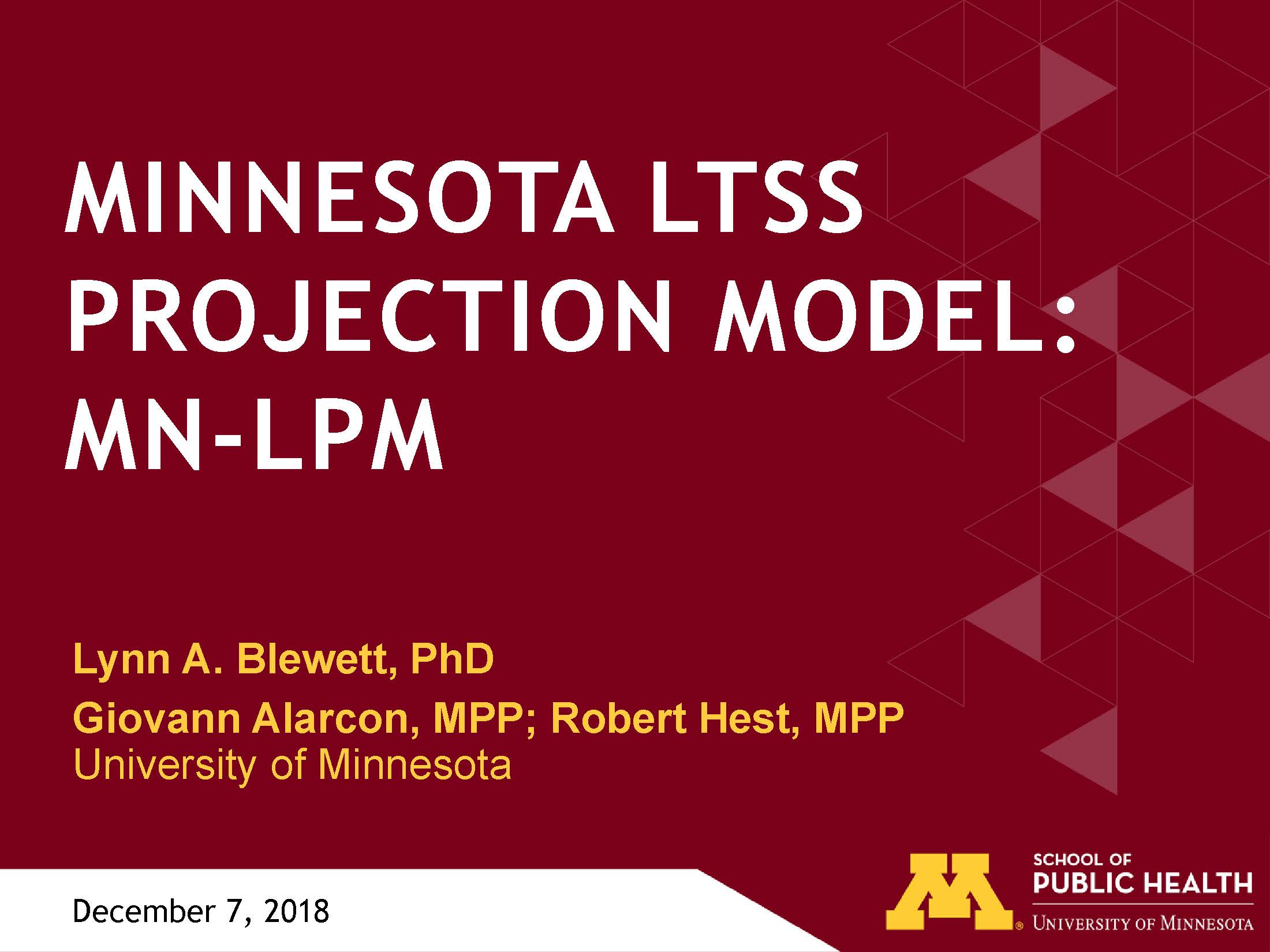
Lynn Blewett, PhD, MPH, SHADAC Director, and UMN Professor. Presented at Minnesota Department of Human Services, Own Your Future Meeting. St. Paul, MN. December 7, 2018.
Additional Presentations:
Alarcon, Giovann. Presented at the 2018 AcademyHealth ARM. June 25, 2018. Seattle, WA.
Blewett, Lynn A. Presented at the 2018 NASHP Annual Conference. August 17, 2018. Jacksonville, FL.
Blewett, Lynn A. Presented at the Legislative Committee on Long Term Care. March 4, 2019. Saint Paul, MN.
Modeling Financial Eligibility for Medicaid Payment of LTSS
Robert Hest, MPP, SHADAC Research Fellow. Presented at the 2018 AcademyHealth Annual Research Meeting. June 26, 2018. Seattle, WA.
Journal Articles:
Modeling Financial Eligibility for Medicaid Long Term Services and Supports.
Lynn A. Blewett, PhD, Robert Hest, MPP &Giovaan Alarcon, MPP | Journal of Aging and Social Policy
Emergency Flexibility for States to Increase and Maintain Medicaid Eligibility for LTSS under COVID-19
Journal of Aging and Social Policy | Lynn A. Blewett, PhD, Robert Hest, MPP
1. Reaves, E.L. & Musumeci, M. 2015. Medicaid and Long-Term Services and Supports: A Primer. Kaiser Family Foundation. Retrieved from https://www.kff.org/medicaid/report/medicaid-and-long-term-services-and-supports-a-primer/
2. MN Department of Human Services. 2018. Minnesota Health Care Spending: 2015 and 2016 Estimates and Ten-Year Projections [PDF File]. Report to the Minnesota Legislature. Retrieved from https://www.health.state.mn.us/data/economics/docs/costs/healthspending2019.pdf
3. MN Demographic Center. 2018. Our Projections. Retrieved from https://mn.gov/admin/demography/data-by-topic/population-data/our-projections/



